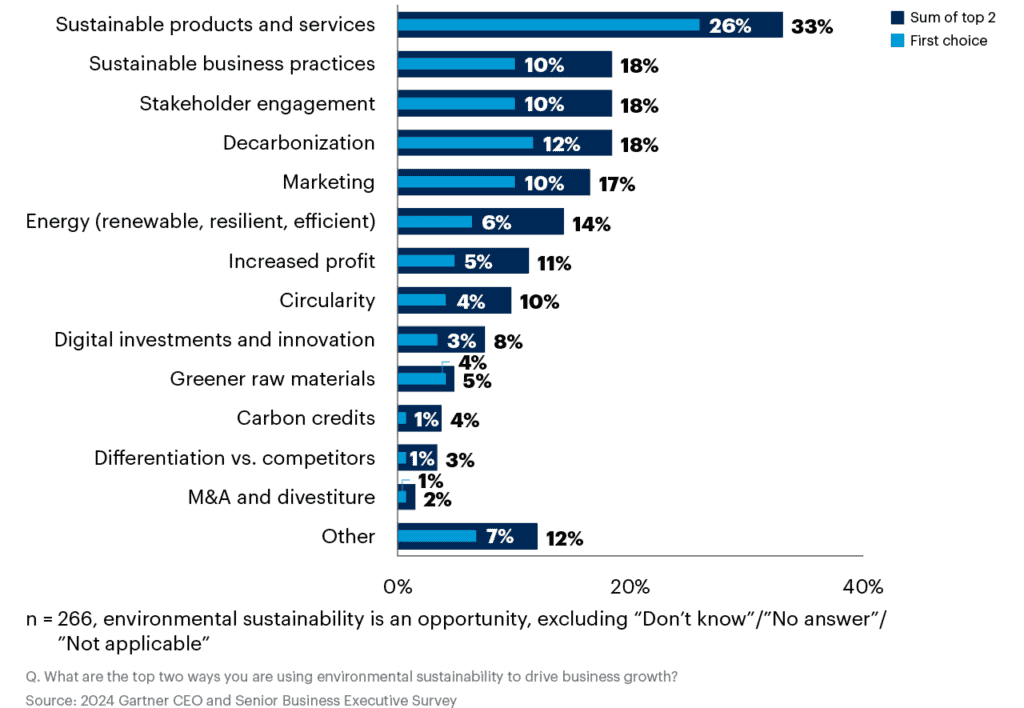“As CEOs reset their long-term strategies, environmental sustainability remains one of the leading factors that will frame competition,” said Kristin Moyer, distinguished VP analyst at Gartner. “Despite much corporate greenwash, recent economic conditions could have triggered a reversion to environmental, social and governance (ESG) cynicism and a refocus on profit at all costs. However, the overall commitment of CEOs appears unwavering.”
Moyer noted that sustainability consistently remains a top 10 business priority, surpassing even productivity and efficiency this year. She added that leaders and investors know environmentally cavalier corporate behaviour is a mid-to-long-term risk to business results, with a big price to be paid when environmental factors are ignored as externalities.
“However, smart CEOs realise big sustainability challenges create new areas of business opportunity,” she cautioned.
Achieving sustainable business growth
The annual survey revealed the leading ways CEOs are using sustainability to drive business growth are through sustainable products and services (33%); sustainable business practices (18%); stakeholder engagement (18%); and decarbonization (18%). Digital investments and innovation is ranked ninth at 8% (see Figure 1).
Figure 1: Environmental sustainability to drive business growth

“Digital technology can accelerate progress toward sustainability goals, going beyond compliance to help enterprises reach targets, enable new business models and unleash revenue streams."
Kristin Moyer
According to Gartner, digital technology plays an important role in driving both financial and sustainability outcomes. For example, the Internet of Things (IoT), data and analytics can optimize wind turbines, which reduces costs and greenhouse gas emissions. AI and IoT can reduce food loss costs and waste; whereas a circular economy marketplace can create new revenue and reduce waste.
Climate change driving agenda
The Gartner survey revealed that 54% of CEOs say their businesses are affected by changing weather patterns, at least moderately. Over half (51%) acknowledge changing weather patterns are causing them to plan changes to the way they operate or have already done so.
“CEOs see that climate change is causing weather pattern shifts that are directly impacting their business operations already,” said Moyer. “Those operations must be adapted, with technology playing a vital role in driving these changes, especially in the dynamics of supply chains.”
The Gartner survey revealed the biggest impact of changing weather patterns cited by CEOs is operating dynamics (30%), particularly changes to logistics, such as warehousing, timing and routing of deliveries. Relocations (including nearshoring) comes in second (14%), followed by automation, technology and data (13%).



